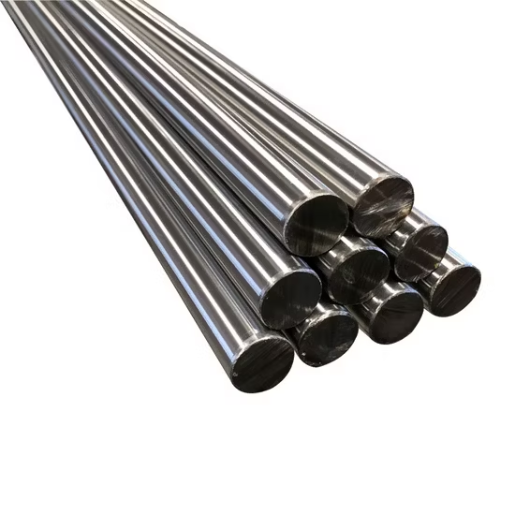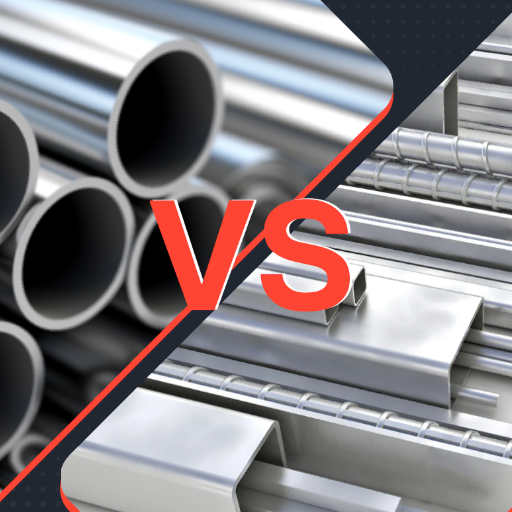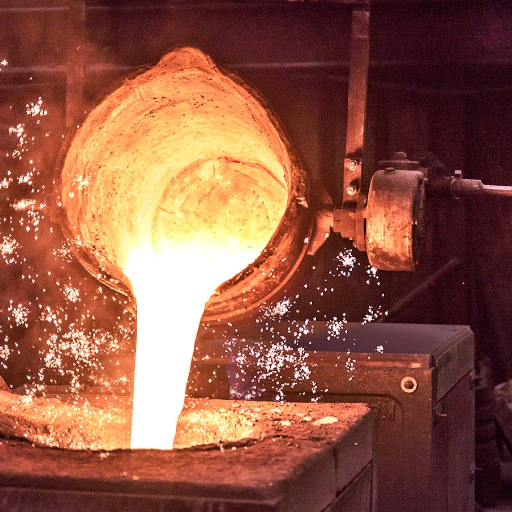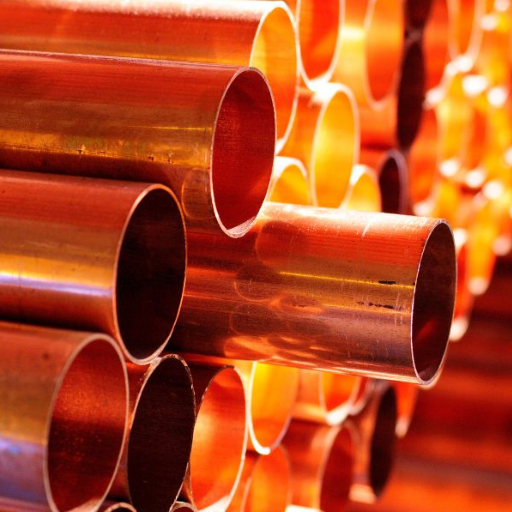The reasons why corrugated galvanized steel has grown in popularity in metal roofing industry is due to its durability, versatility, and the fact that it is very cost effective. The material not only performs exceptionally but also adapts well to different architectural requirements set out for new constructions or retrofits to existing roofs. In this article, we will analyze the ability of corrugated galvanized steel to combine strength, weather resistance, and life Span to offer an unmatched option for residential, commercial, and industrial buildings. From its unique manufacturing process to its ability to endure extreme environments, we will cover all the critical details that help determine if this dependable material is right for your roofing project.
What is Corrugated Galvanized Steel?

Corrugated galvanized steel is steel sheeting that has undergone a zinc coating process to prevent corrosion. It is then rolled into a unique pattern of C-shaped folds for added strength and durability. The zinc coating corrugated steel is also known for protects it from Rust while also exposing it to moisture and weather damage. The structural integrity of the steel is enhanced further because of the weight distribution provided by the corrugated shape. The material is also cost effective which adds to its wide use in roofing and siding applications.
Understanding the Metal Composition
Galvanized corrugated steel is made of carbon steel which is dipped in zinc to coat it with a protective layer, a process called hot-dip galvanization. The carbon steel is crafted such that there is an ideal balance between strength, malleability, and resistance to wear. As with any steel alloy, it is composed of iron, carbon, manganese, and some other trace elements which all are purposefully selective each their role.
The zinc coating used provides sacrificial protection by preferentially corroding to the steel beneath it when exposed to oxygen and moisture. This property is especially useful for outdoor settings as it prolongs the lifespan of the material. There are also advanced variations of galvanized coating that include a mixture of aluminum which improves the heat reflectivity of the coating and the corrosion resistance under harsher or saline conditions. These materials which have been selected, as well as the layering techniques, show exemplary engineering precision aimed at ensuring structural performance and durability over extended periods of time.
How is Galvanization Processed?
In the galvanization procedure, multiple comprehensive steps are performed to guarantee that basic material receives coating adhesion and long-term protection. First step is to smoothen and prepare the surface of iron or steel by cleaning it to get rid of rust, scales, oil and dirt. In most cases, the cleaning procedure consists of at least two stages. The first stage is called degreasement and second stage is pickiling where an acidic solution is used to strip any oxidation layers or contaminants that would hinder the coating process.
A protective layer of flux is spread onto the surface free from rest products to prevent oxidation, this is known as Pre-galvanization. With the oxide layer removed, the steel can be placed under the conditions needed to meld with zinc. The steel will be immersed a molten zinc bath slopped at little under 842°F. The step is also known as “hot-dip galvanizing”, in this process, a strong metallurgical bond is formed between the two materials. The result is a multi-layered zinc-iron alloy with outer pure zinc coat.
Post galvanization, the material is cooled down followed by an inspection of the material for coating thickness and adherence to set standards such as ASTM A123 or ISO 1461. Such uniformity is required of coatings to ensure precise adhesion to the galvanization. Meticulous processing guarantees the product achieves unequaled resistance to corrosion, abrasion, and even mechanical stress. As a result, the product can be expected to be used in hostile environments like marine, industrial, or construction, along with other structural applications.
Key Benefits of Using Corrugated Steel
Steel gives the building and construction industry rough misuse for its exceptional structural integrity. This material allows advanced and even extreme changes during the environmental factors without showing any damage. They are truly unmatched and unmatched and truly unturned within moist conditions, meaning there is either rain or heat all day. Furthermore, transporting the steel will not become and issue as they are compact and lightweight.
Moreover, the production of corrugated steel comes from recycled steel, making it easy to recycle at the end of its life. This feature is still in sync with modern sustainability which advocates for less waste, energy use, and more environmental protection in the construction industry. Considering all the advantages of cost, durability, and environmental impact, corrugated steel remains vital for projects that need both environmentally friendly materials and top-notch resources.
What are the Advantages of Corrugated Metal Panels?

- Durability – Harsh weather conditions like high winds, heavy rain fall, and snow do not wear down corrugated metal panels.
- Lightweight – The overall weight and strength of the panels serves to lower installation and transportation costs, being economical.
- Low Maintenance – Mechanical treatment of the material enables it to resist rust and corrosion, further increasing its lifespan.
- Cost-Efficiency – Installing both residential and commercial projects becomes energy efficient as the length of the projects.
- Energy Efficiency – Ease of Sunlight steps heat absorption and consequently lowers cooling expenses, some corrugated panels are designed for this purpose.
- Sustainability – Moreover, the support for these friendly eco-construction practices comes from the fact that panels are frequently made from materials that can be recycled.
Durability and Longevity
The renowned characteristics of corrugated metal panels includes exceptional durability alongside reliable longevity, even in mounting external environment factors. As is the case with most options on the market, these panels are made using top-notch steel or aluminum which greatly resists corrosion, weathering, and other physical impacts. In addition, the advanced galvanized or polyester finishes give them greater durability when exposed to corrosive humid conditions, UV rays, and fluctuating temperatures. According to studies, well kept roofs made from corrugated steel will last anywhere between forty to seventy years. This also showcases how it reduces redundancy. These panels also possess considerable strength, allowing them to support heavy loads like wind and snow pockets without deformation. The combination of additional construction costs alongside reduced long-term replacements places these panels as the optimum building material in construction.
Cost-Effectiveness Compared to Other Metal Roofing
In the comparison of metal roofing types, corrugated metal panels remain one of the more economical options. The low initial investment and high ROI from minimal upkeep and long lifespan makes them economically appealing. While standing seam metal roofs incur expensive precise installation, hinged panels offer similar durability at a more accessible cost. Moreover, the widespread availability of corrugated panels lowers material prices and ensures expedited project completion. Regardless of the target market, residential or commercial, cost-efficient durable roofing is attainable with aerated metal.
Resistance to Weather and Environmental Factors
Due to its structural characteristics, corrugated metal roofing is highly resistant to an array of weather conditions while providing long-lasting service in diverse environments. It can withstand heavy winds, considerable amounts of rain, and even snow due to the high snow loads it can withstand trusting its strength. Besides other factors, modern corrugated panels can also be enhanced with advanced coatings such as zinc-aluminum or galvanized finishes to better resist corrosion and UV radiation. This is helpful in places that have high humidity, salty coastal air, or prolonged sunlight. Research and technical evaluations show that the tailored installation of this type of roofing enables it to provide reliable service for more than half a century, even under extreme ecological pressures.
What are the Different Types of Corrugated Roofing?

There are several types of corrugated roofing, each matched with their own specific applications and requirements:
- Corrugated Metal Roofing – This type is light weight and weather resistant. It is widely used in both commercial and residential settings. It is made of steel, aluminum or zinc.
- Corrugated Plastic Roofing – Usually made with PVC or Polycarbonate, this variation offers transparency which is required for greenhouses or patio coverings. This type is very cheap, lightweight, and rust resistant.
- Bitumen Corrugated Roofing – Made of fiber reinforced bitumen sheets, this type has an added waterproof seal alongside great thermal insulation and is usually used in garages, storage sheds, or farm buildings.
The variation in ProjectManager’s costing, durability, and key functions make it easier to use for specific business needs.
Comparison of Galvanized and Galvalume
Metal roofing also includes Galvanized and Galvalume steel which are two of the most popular construction materials. They do differ in composition and performance, but their durability and resistance to corrosion is what makes them sought after. Unlike Galvalume, Galvanized is coated with zinc which protects its rust, especially in humid conditions. It is worth noting however, his coating is not ideal for coastal or industrial areas due to acidic and salty conditions.
Also, Galvalume steel has a coating which consists of aluminum, zinc, and silicon giving it added resistance to corrosion and heat. Because of its aluminum content, Galvalume outlasts galvanized steel exposed to extreme conditions for longer periods of time because it resists oxidation and weathering better. Galvalume can be harsher to handle during installation as protective scratches and damage due to the coating being aluminum rather than zinc-only shifts are more common.
In terms of cost, Galvalume is usually priced slightly higher than alternatives because of longer lifespan and improved performance. Ultimately, selecting either option two depends on budget constraints, essential application and specific environmental factors. Both Galvanized and Galvalume Steel are optimal options; however, their different project requirements allow for different characteristics.
Choosing Between Aluminum and Steel
When choosing a project, weighing aluminum and steel, some of the primary aspects that need reviewing includes: the structure’s strength-to-weight ratio, also its resistance to corrosion, thermal properties, and costs attached to it. The advantage is that aluminum’s ratio is strength to weight and makes it a number one choice for defense, aeronautics, and automotive industries. With a steel-operating environment, it cannot be compromised. Furthermore, aluminum is resistant to rust and corrosion which is another bonus for places high on humidity or rich in saltwater.
The rate at which material expands when heated is also of concern. Aluminum expands at double the rate of steel. Considering the relationship between the properties of materials and the specifics of a project allow engineers to make informed choices based on the requirements dealing with efficiency, cost, strength and life exenspanse for the structure.
How to Maintain Corrugated Galvanized Steel Roofing?

Proper corrugated galvanized steel roofing maintenance guarantees long-lasting efficiency and performance. Adhere to these important practices:
- Regular Cleaning
To ensure water does not pond which may lead to rust, remove any accumulated dirt, leaves, and other debris from the surface of the roof and the gutters. Cleaning should be done with a water hose or soft broom to svoid damaging the coating.
- Inspect for Damage
Address any signs of rust scratches or dents immediately to avoid further damage to the roof.
- Repair Coating
In case the protective zinc coating has been chipped or scratched, restore protection by applying zinc-rich paint or sealant. Ensure that such products align with the guidelines set forth by the manufacturer in terms of repair recommendations.
- Tighten or Replace Fasteners
Check screws or nails and other fasteners that hold certain parts together to maintain proper structural security. Replace fasteners that are loose or have rust on them.
- Prevent Contact with Dissimilar Metals
When working with galvanized steel, copper leads should be avoided at all cost since they are oxidizable materials that cause galvanic corrosion.
Following all the given steps will ensure that your corrugated galvanized steel roofing remains in great shape to protect your structure for years.
Cleaning and Upkeep Tips
The appearance and functionality of corrugated galvanized steel roofing can be preserved with proper cleaning and regular maintenance. Below are the detailed tips provided in a stepwise manner to ensure optimal maintenance:
- Regular Cleaning of Surface Debris
To prevent moisture accumulation which can cause staining or rust, ensure clean-up of overgrown dirt such as leaves, branches and others. Also check the roof two times over the span of a year along with after heavy weather to guarantee maintenance. During clean up, use gentle soft-bristle brooms and blowers to avoid damaging coatings using high pressure.
- Washing with a Mild Detergent Solution
Overtime, metals can be degraded by dirt, bird excrement and other pollutants. With the help of a non-abrasive pH neutral detergent, warm water and a few sponges, complete roof clean up. It is also recommended washing under 1500 PSI with non abrasive coatings as to not destroy the galvanized coating.
- Addressing Stains and Corrosion Spots
Act quickly when dealing with areas that have light rust or stains to avoid further corrosion. Treat these areas with special metal scrub pads and cleaning solutions while being careful not to damage the zinc coating.
- Gutter Maintenance
Water pooling along roof edges causes an increased risk of rust and water damage. To resolve this, periodically clean gutters in order to maintain sufficient water flow. Along the roof check them also for leaks and breakdowns.
- Inspect Sealants and Fasteners
Regularly inspect the state of sealants applied to overlaps or fasteners. Remove and replace any sealants that show signs of damage or deterioration. Also, retighten or replace fasteners that are or rusted. Use galvanized or vinyl-coated fasteners of the same material as the roofi ng for longevity.
Following these cleaning and maintenance steps will help preserve the architectural integrity, extend the lifespan, and enhance the appearance of a roof made from corrugated galvanized steel.
What are Common Applications for Corrugated Metal?

Due to its configuration along with strength and endurance, it has a wide application range in different industries. Some of the most important include:
- Roofing and Siding: Residential, commercial, and agricultural buildings uses it extensively because of it’s weather resistance and long life.
- Fencing: Used to enhance security and privacy; it is a good long-term solution.
- Storage Structures: Perfect for sheds, barns, and industrial warehouses since they are loads and weather resistant.
- Interior Design: Used in walls and ceilings or even decorative panels to give a modern industrial look.
- Transportation: Used to manufacture transport containers and side body panels of vehicles due to the longevity required.
Industrial vs. Residential Uses
Due to its strength, durability, and flexibility, corrugated metal has industrial and residential uses that overlap and differ at the same time.
Industrial Uses: An example of industrial use is within high-scale and heavy-duty operational functions as found in units like factories and warehouses. These are some of the configurations of buildings in which this material is used. Other examples include storage buildings as well as make-shift facilities. Warehouses need to hold a great deal of weight and additionally resist corrosion, which is offered through this material. Due to its lightness, it does not place undue stress on structure. Additionally, it can withstand environmental challenges such as heavy winds and snow, therefore straining the structure’s durability. Shipping containers, freight car panels, and protective boxes for sensitive OEM goods require a great deal of handling, thus needing durable materials to withstand harsh environments and handling.
Residential Uses: On the other hand, in residential applications, corrugated metal combines appeal and practicality. The material gets used by homeowners and designers alike that use it as Roofs and walls because it is deflects heat, lasts for a long time, and does not need too much upkeep. In addition, modern interior design employs it on accent walls, ceilings, and custom-made furniture as an industrialized texture to the design. Beyond that, panels made of corrugated metal are often incorporated into fences and raised garden beds, bringing practicality to garden landscaping design.
As industries focus on performance and load capacity, residential applications wow with attention to design flexibility and energy efficiency, showcasing the material’s versatility.
Reference Sources
- Corrugated Sheet Metal and Panels – Industrial Metal Supply: Discusses corrugated metal roofing products and their durability in various environmental conditions.
- Corrugated Metal Panels – corrugatedmetal.com: Details on corrugated panels, including their profiles and finishes.
- Galvanized steel Roof Panels at Lowes.com: Information on the cost and types of galvanized steel roof panels.
Frequently Asked Questions (FAQs)
Q: What are the benefits of using a corrugated galvanized steel roof panel?
A: Corrugated galvanized steel roof panels are durable, lightweight, and resistant to corrosion due to their zinc coating. They are also energy-efficient and easy to install, making them an excellent choice for various roofing applications.
Q: How does the gauge of a corrugated metal sheet affect its performance?
A: The gauge of a corrugated metal sheet indicates its thickness. A lower gauge number means a thicker steel substrate, which generally translates to increased durability and resistance to impact, making it suitable for harsher environments.
Q: Can corrugated sheet metal be used for siding as well as roofing?
A: Yes, corrugated sheet metal can be used for both roofing and siding applications. It is often utilized in wall panels and wainscoting due to its aesthetic appeal and protective qualities.
Q: What is the typical width of a corrugated metal sheet?
A: The width of a corrugated metal sheet can vary, but common widths range from 26 to 36 inches. It is important to choose a width that fits your specific installation needs.
Q: How do I install a galvanized steel roof panel?
A: Installing a galvanized steel roof panel involves preparing the roof structure, laying out the panels according to the desired panel profile, and securing them with appropriate hardware. It is recommended to follow manufacturer guidelines for the best results.
Q: Is stainless steel a viable alternative to galvanized steel for roof panels?
A: Yes, stainless steel is a viable alternative to galvanized steel for roof panels. While it is generally more expensive, it offers superior corrosion resistance and longevity, making it ideal for specific applications.
Q: What types of roofing materials are compatible with corrugated metal roofing products?
A: Corrugated metal roofing products are compatible with various roofing materials, including asphalt shingles and tile. They can also be used in conjunction with insulation materials to enhance energy efficiency.
Q: How does the zinc coating protect corrugated sheet metal?
A: The zinc coating on corrugated sheet metal acts as a barrier against moisture and environmental elements, preventing rust and corrosion. This protective layer extends the lifespan of the metal sheets significantly.







